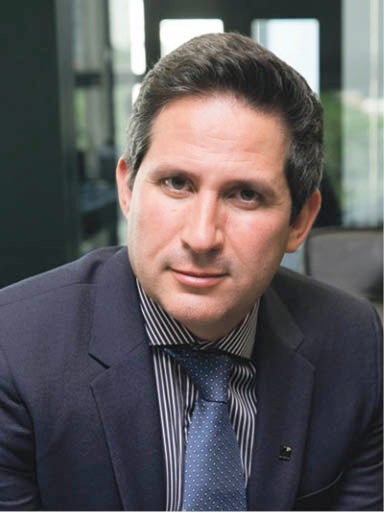A low insurance penetration rate, large market and growing middle class bring new opportunities for insurers investing in the Brazilian market. The development of information and communication technology in the country is also brightening up the outlook for Brazil’s insurance industry, considering it has the fourth highest number of internet users in the world.
“Technology developments have been increasingly meaningful in the Brazilian insurance market. Distribution was mostly affected with product facilities replacing the traditional placing structures, as well as mobile apps that reach brokers and customers in real time,” says Angelo Colombo, chief executive of Allianz Global Corporate and Specialty (AGCS) South America.
Mr Colombo says that on the buyers’ side, technology made the supply chain more efficient, requiring different risk transfer solutions from the insurance market. “In the consumer product development field, the insurtechs have been flourishing quite fast, providing telematics solutions for motor insurance and speeding up claims handling with digitised processes.”

Renato Rodrigues of XL Catlin says the introduction of digital signatures brought profound change to the Brazilian insurance industry
Renato Rodrigues, country manager for Brazil at XL Catlin, says: “One of the technological innovations that changed the Brazilian insurance market the most was the introduction of the digital signature. This brought a profound change to the insurance industry, as insurance policies are now completely paperless.”
Mr Rodrigues adds that insurers in Brazil have a close relationship with their regulator, the Superintendência de Seguros Privados (SUSEP), which facilitates the understanding and approval of any digital changes in the market.
However, Scott Mangan and Guy Simoes, senior financial analysts on A.M. Best’s reinsurance team, consider the regulator spends too much energy and capital fighting fraud.
The international rating agency’s experts say the extra layers of bureaucracy, needed to prevent fraud, can deter technological development and ultimately will lead the insurance industry in Brazil to be a follower of the developed markets, as it uses more resources to prevent fraud and is then slowed down by a complex legal system.
As an emerging market, Brazil presents many prospects for insurance companies investing in the country. In addition, with an insurance market growing at a two-digit pace annually, despite the economy’s performance, there might be a few lessons to be learnt from Latin America’s biggest country.
According to Mr Renato, one of the main lessons to learn is the collection and availability of information on the industry. “The insurance market’s regulator digitally monitors and controls all insurance transactions and activities. This information is available to the industry and it creates a trustworthy and open market. In many other markets, data regarding the industry’s gains, losses and operations is kept secret. Here in Brazil, we can follow our competitors’ activities and SUSEP can gather up-to-date and complete data on the market,” he says.
There is a huge unattended market of low-income consumers widespread throughout the country
Luis Gutiérrez, president for auto, general insurance and affinity lines at Grupo Segurador Banco do Brasil e Mapfre, adds that the Brazilian insurance market is creative and innovative. He says: “There is a great opportunity to increase insurance awareness in Brazil, since only 18 per cent of the population has any kind of insurance coverage.”
Mr Gutiérrez says the insurance group is focusing on a two pillars’ strategy in the country, one to develop attractive solutions for insurance consumers and the second to create new products for the majority of the population that does not usually buy insurance. He adds that it is also necessary to facilitate access and payment options available to the new insurance buyers in Brazil.
Mr Colombo, from AGCS, says there are a few key initiatives that will be core for the industry’s development, such as micro-insurance. “There is a huge unattended market of low-income consumers widespread throughout the country,” he says. “Distribution solutions, whereby insurance could be distributed together with other products, have been implemented over time, but there is much more in the pipeline.”
Marcelo Munerato de Almeida, president for Aon Brazil, says the insurance industry has been developing its connectivity, productivity, distribution and compliance. New technologies play a crucial role in this development.
“Last year Aon acquired Admix, a local Brazilian broker, due to their cutting-edge technological solutions area. The company had advanced customer relationship, operations and distribution technologies, and this was crucial to our acquisition decision,” says Mr Munerato.
He explains that Aon adapts global technological solutions for its operations in Brazil, but also develops local tools to suit the country’s requirements.
With almost 22,000 planes registered in Brazil, of which more than 10,000 are privately owned, Mr Rodrigues says XL Catlin had to develop a new digital tool for aviation liability insurance, to enable brokers to quote and issue standard coverage certificate documents quickly.
The future will bring new requirements and changes for the insurance industry in Brazil. Mr Rodrigues says the role of the underwriter is already changing. “Artificial intelligence has become better at calculating risks than underwriters and analytics are more efficient at analysing data than humans,” he says.
Mr Rodrigues believes driverless cars and drones will also revolutionise the industry. “We are already using drones to assess claims, they enable us to assess quickly and efficiently casualties that take place in remote locations,” he says. “This is particularly important in Brazil, where we often need to check casualties in the ocean or, due to the country’s size, distant and isolated sites.”






